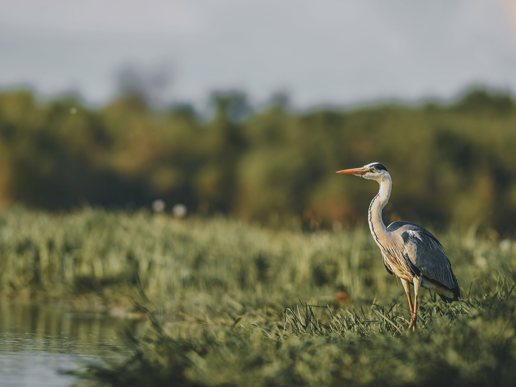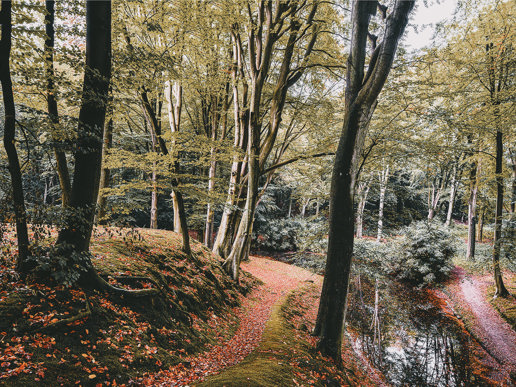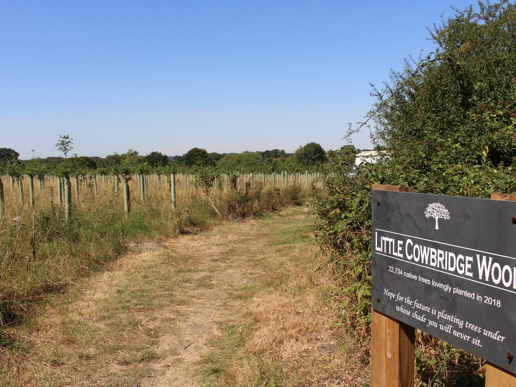Fields of Dreams: Understanding Meadows

Plantlife's #NationalMeadowsDay this year celebrates the value of our local biodiverse grasslands, including meadows.
To celebrate, James Donnelly, Ground Control, explores 'what is a meadow' and 'why they are important' - all contemplated on a morning walk through a local meadow.
Isn't a meadow 'just a field'?
To start, it is important to have a definition. Meadows are "large open areas, covered in grasses, herbs, and non-woody wildflowers". It's critical that the wildflowers are a country’s native flowering plants, as seen in the photos throughout this presentation, taken on a recent morning walk of mine.

Types of Meadows: Natural
Natural meadows are perpetual.
The world's natural meadows exist as a result of environmental pressures that prevent the growth of woody plant species. These pressures occur for a variety of reasons and include:
- Coastal meadows formed from high salt.
- Alpine meadows formed at high altitudes.
- Prairie meadows formed with low moisture and are dominated by big game animals.
- Wet meadows formed with high moisture.
- Desert meadows as a result of low rainfall and low nutrients.
They can also be influenced by the species of plants and fungi around them, which can help sustain meadows or transform them into a completely different type of ecosystem.
As an example, the UK’s Wild Orchid species make underground links with fungal networks, which steal nutrients from other plants. Additionally, Yellow Rattle is a wildflower that directly parasitises grass. In both cases, this causes the surrounding grasses to grow shorter, produce less shade, and allow other wildflowers to grow!
Types of Meadows: Man-Made
Man-made meadows come in several forms. In day-to-day life, we are most likely to interact with agricultural or urban meadows.
- Agricultural meadows are fields without livestock, where the grass is allowed to grow and be harvested as hay. This hay is used as animal feed, particularly in the winter when the grass doesn’t grow. Some farmers periodically release animals onto meadows rather than harvesting the hay as an economically efficient way to manage this space.
- Urban meadows, in place of traditional lawns, are an inexpensive management method and ultimately just provide a blank space for nature to thrive. Many individuals and corporations have chosen to create their own meadows as an alternative.
What about 'a bit of both'?
Transitional meadows are not permanent landscapes and occur when any “cleared” area, left unmanaged, enters a period of explosive growth.
Interestingly, the poppy is used to remember World War One because they were the first wildflower to flourish in the disturbed soils left behind.
Over time and through natural processes, taller and hardier plants take hold, and the flowers are replaced by scrub, brambles, and sparse woodland. The “Transitional Meadow” will eventually change into a different type of ecosystem, defined by the pressures around it, and is often created accidentally by human processes, wildfires, or natural disasters.
The act of deliberately burning or clearing forests to create grasslands to hunt game is a historical example of humans intentionally creating transitional meadows.

Why should we care about meadows?
Meadows are important for people, for businesses, and can be a low-cost maintenance solution that is better for nature.
- Cost: Meadows are cheaper to maintain than lawns, and generally require fewer days of disruption.
- Food: Pollinators rely on meadows, and 1/3rd of the world's food relies on pollinators.
- Stability: Meadows can often be found on flood plains, and help prevent the damage caused by heavy rainfall.
- Medicines: Many drugs we rely on were discovered in the plants found in meadows, such as foxgloves (for heart disease), poppies (morphine), and wormwood (for malaria).
Other advantages include tourism, honey production, and biodiversity improvements.
How do they help the planet?
Their importance to biodiversity cannot be understated, and in the UK we can see this in the natural beauty of nesting birds, food gathering of all kinds, pollinating insects, and even the sheltering of young deer, field mice, rabbits, and hares.
A single field might have 100 different wildflower species, and each species could be food, or building material for 100 different species of animal.
Grasslands develop dense root systems, which store carbon, and prevent damage from disasters, such as flooding and landslides.

What’s the problem?
The UK was once covered by Meadows, but 97% have disappeared.
25% of the UK's remaining meadows are in Worcestershire, which is my home county. The pictures were taken 5 minutes from my house.
Pollinator numbers have dropped by a third, with butterfly numbers down by 17% and moths by 25%.
The increased average global temperature, changing weather patterns, and in some areas of the world, reduced snow with earlier melting, are causing flowers to bloom at the “wrong” time of the year.
More extreme weather, sudden heat waves, prolonged flooding, and unexpected droughts can have serious long-term effects on the stability of these unique habitats.
And worst of all, is the direct human influence. Meadows are seen as empty spaces, with no use or purpose. As such, they are prime targets for new build housing, or other major developments.
What can we do?
- Changing the typical grass lawns, for lower maintenance wildflower areas. If this is too scary, try leaving sections of grass to “go wild” and encourage pollinators.
- Remember to mow only after flowers have bloomed.
- Remove the clippings, or place them in a separate area to create an alternative “high nutrient” habitat
- Avoid fertilizers. By keeping the fertility and nutrients of the meadow low, prevents large, energy-hungry species from taking hold, so avoid fertilizers.
And if all else fails, activities like No Mow May are a great place to start.

The restoration of Wetlands

Seeing the wood for the trees: The importance of forests






